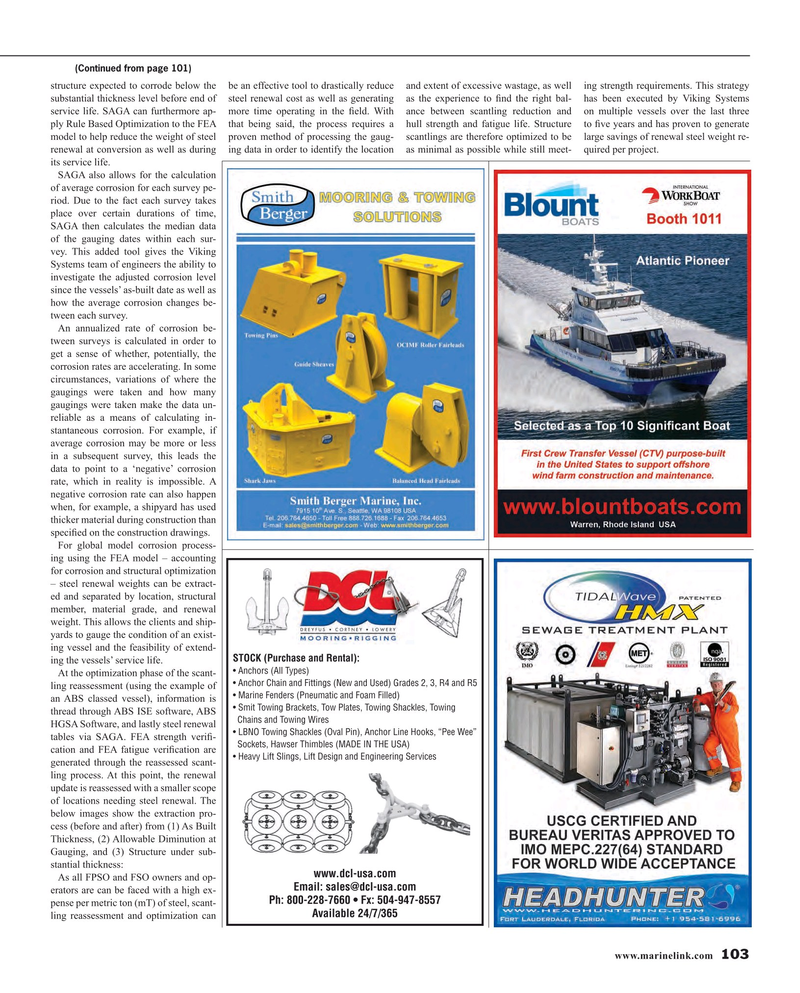
Page 103: of Maritime Reporter Magazine (November 2016)
Workboat Edition
Read this page in Pdf, Flash or Html5 edition of November 2016 Maritime Reporter Magazine
(Continued from page 101) structure expected to corrode below the be an effective tool to drastically reduce and extent of excessive wastage, as well ing strength requirements. This strategy substantial thickness level before end of steel renewal cost as well as generating as the experience to ? nd the right bal- has been executed by Viking Systems service life. SAGA can furthermore ap- more time operating in the ? eld. With ance between scantling reduction and on multiple vessels over the last three ply Rule Based Optimization to the FEA that being said, the process requires a hull strength and fatigue life. Structure to ? ve years and has proven to generate model to help reduce the weight of steel proven method of processing the gaug- scantlings are therefore optimized to be large savings of renewal steel weight re- renewal at conversion as well as during ing data in order to identify the location as minimal as possible while still meet- quired per project. its service life.
SAGA also allows for the calculation of average corrosion for each survey pe- riod. Due to the fact each survey takes place over certain durations of time,
SAGA then calculates the median data of the gauging dates within each sur- vey. This added tool gives the Viking
Systems team of engineers the ability to investigate the adjusted corrosion level since the vessels’ as-built date as well as how the average corrosion changes be- tween each survey.
An annualized rate of corrosion be- tween surveys is calculated in order to get a sense of whether, potentially, the corrosion rates are accelerating. In some circumstances, variations of where the gaugings were taken and how many gaugings were taken make the data un- reliable as a means of calculating in- stantaneous corrosion. For example, if average corrosion may be more or less in a subsequent survey, this leads the data to point to a ‘negative’ corrosion rate, which in reality is impossible. A negative corrosion rate can also happen when, for example, a shipyard has used thicker material during construction than speci? ed on the construction drawings.
For global model corrosion process- ing using the FEA model – accounting for corrosion and structural optimization – steel renewal weights can be extract- ed and separated by location, structural member, material grade, and renewal weight. This allows the clients and ship- yards to gauge the condition of an exist- ing vessel and the feasibility of extend-
STOCK (Purchase and Rental): ing the vessels’ service life. s

 102
102

 104
104
